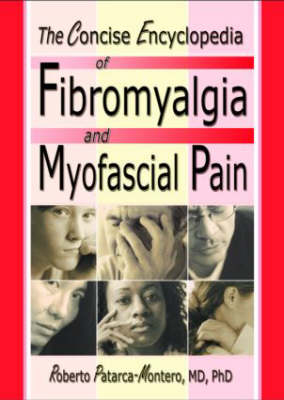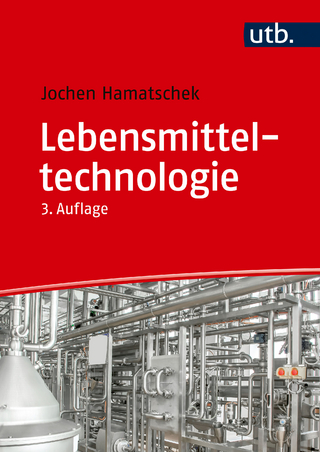
The Concise Encyclopedia of Fibromyalgia and Myofascial Pain
Haworth Press Inc (Verlag)
978-0-7890-1527-3 (ISBN)
- Titel ist leider vergriffen;
keine Neuauflage - Artikel merken
relevant case study findings, summarized to provide the answers you need
evidence-based alternative medicine approaches
pertinent findings on related disorders
an extensive bibliographyComprehensive and thorough, The Concise Encyclopedia of Fibromyalgia and Myofascial Pain gives you the information you’ve been looking for on these painful disorders that affect more than six million Americans. This important book gives health care professionals a greater understanding and awareness of fibromyalgia and myofascial pain and gives patients help at their fingertips.
Foreword
Preface
Chapter 1. Molecular Recognition Processes Between Plant and Bacterial Pathogens
Introduction
Physical Contact of Plant Cells is Necessary for Bacterial Recognition
Molecules Responsible for Physical Contact
Many Bacterial Pathogens Induce Necrosis on Hosts and Nonhosts
Bacterial Pathogens Grow in Both Host and Nonhost Plants
Bacterial Pathogens Induce Leakage of Nutrients in Both Host and Nonhost Plants
Bacterial Genes Involved in Recognition of Hosts and Nonhosts
Coregulation of hrp, avr and Other Pathogenicity Genes
Transcription of Bacterial Pathogenicity Genes in Planta
Plant-Derived Molecules May Be Involved in Induction of Bacterial Genes
Some Plant Signals May Direct Synthesis of Elicitors
Secretion of Elicitors From Bacterial Cells in Plants
The Role of hrp and avr Genes in Early Recognition Process in Plant-Bacterial Pathogen Interactions
Other Signal Molecules of Bacterial Pathogens
The Signal Transduction System
Systemic Signal Induction
Is Cell Death Involved in Signal Transduction Pathway?
How Pathogens Avoid or Overcome Host Defense Mechanisms Induced by the Signal Transduction System?
Possible Role of Signal Transduction System in Evasion of Host Recognition by Phytopathogenic Bacteria During Pathogenesis
Conclusion
Chapter 2. Host Defense Mechanisms: Cell Wall?the First Barrier and a Source of Defense Signal Molecules
The First Barrier to Bacterial Infection in Plants
Structure of the Plant Cell Wall
Pectic Polysaccharides
Cellulose
Hemicellulos
Cell Wall Proteins
Bacterial Genes Encoding Extracellular Enzymes
Bacterial Genes Regulating Production of Extracellular Enzymes
Bacterial Genes Regulating Secretion of Extracellular Enzymes
Secretion of Proteases
The Signaling System in Induction of Bacterial Extracellular Enzymes
Plant Cell Wall Components Involved in Defense Mechanisms Against Bacterial Pathogens
Bacterial Extracellular Enzymes Induce Host Defense Mechanisms
Pectic Fragments Induce Virulence Genes in Bacterial and Defense Genes in Plants
Pectic Enzymes Vary in Inducing Resistance or Susceptibility
Polygalacturonase-Inhibiting Proteins
Cell Wall Modifications and Bacterial Disease Resistance
Conclusion
Chapter 3. Active Oxygen Species
Mechanism of Production of Active Oxygen Species
Signals for Induction of Active Oxygen Species in Bacteria-Infected Plants
Bacterial Infection Leads to Production of Active Oxygen Species in Plants
Active Oxygen Species May Induce Lipid Peroxidation
Increases in Active Oxygen Species Lead to Activation of Lipoxygenase
Active Oxygen Species Production Leads to Cell Membrane Damage
Active Oxygen Species May Directly Kill Bacterial Pathogens
Bacterial Pathogens May Tolerate Toxicity of Active Oxygen Species
Antioxidants of the Host May Protect Bacterial Pathogens Against Active Oxygen Species
The Possible Role of Active Oxygen Species in Disease Resistance
Conclusion
Chapter 4. Inducible Plant Proteins
Introduction
Nomenclature of Pathogen-Inducible Plant Proteins
Occurrence of PR Proteins in Various Plants
Classification of PR Proteins
Bacterial Pathogens Induce PR Proteins
Molecular Mechanisms of Induction of PR Proteins
Compartmentalization of PR Proteins in Plant Tissues
The Role of PR Proteins in Bacterial Disease Resistance
The Second Group of Pathogen-Inducible Proteins: Constitutive, but Increasingly Induced
Hydroxyproline-Rich Glycoproteins
Lectins
Not All Inducible Proteins Need Be Involved in Inducing Bacterial Disease Resistance
Conclusion
Chapter 5. Inducible Secondary Metabolites
What Are Inducible Secondary Metabolites?
Bacterial Pathogens Induce Accumulation of Secondary Metabolites in Infected Tissues
Phytoalexins Accumulate in Plants After Irreversible Cell Membrane Damage
Phytoalexins Accumulate Only Locally and Not Systemically
Mode of Syntheses of Phytoalexins
Evidences That Induced Secondary Metabolites Are Involved in Bacterial Disease Resistance
Phytoalexins May Be Suppressed, Degraded, or Inactivated in Susceptible Interactions
Some Phytoalexins May Not Have Any Role in Disease Resistance
Constitutive, but Induced Secondary Metabolites During Pathogenesis
Conclusion
Chapter 6. Biotechnological Applications: Molecular Manipulation of Bacterial Disease Resistance
Introduction
Manipulation of Signal Transduction System for Induction of Disease Resistance
Manipulation of Resistance Genes Involved in Signal Transduction System
Manipulation of Signal Transduction System by Elicitors
Manipulation of Signal Transduction System by Using Chemicals
Manipulation of Signal Transduction System by Using Rhizobacterial Strains
Manipulation of Signal Transduction System by Enhanced Biosynthesis of Salicylic Acid
Manipulation of Signal Transduction System by Inducing Accelerated Cell Death
Manipulation of Signal Transduction System by Enhanced Biosynthesis of Cytokinins
Manipulation of Inducible Proteins for Induction of Bacterial Disease Resistance
Suppression of Virulence Factors of Bacterial Pathogens to Manage Bacterial Diseases
Exploitation of Insect Genes Encoding Antibacterial Proteins for Bacterial Disease Management
Exploitation of Bacteriophage Genes for Bacterial Disease Management
Exploitation of Genes from Human Beings, Hens, and Crabs for Management of Plant Bacterial Diseases
Conclusion
References
Index
| Erscheint lt. Verlag | 2.8.2002 |
|---|---|
| Verlagsort | Binghamton |
| Sprache | englisch |
| Themenwelt | Medizin / Pharmazie ► Medizinische Fachgebiete |
| ISBN-10 | 0-7890-1527-7 / 0789015277 |
| ISBN-13 | 978-0-7890-1527-3 / 9780789015273 |
| Zustand | Neuware |
| Haben Sie eine Frage zum Produkt? |
aus dem Bereich


